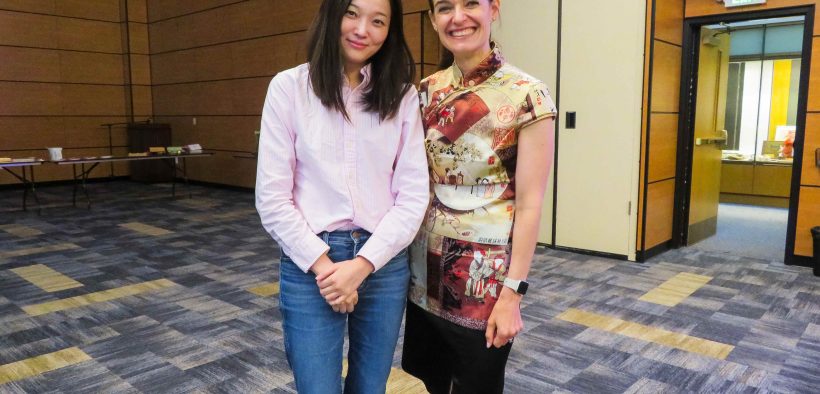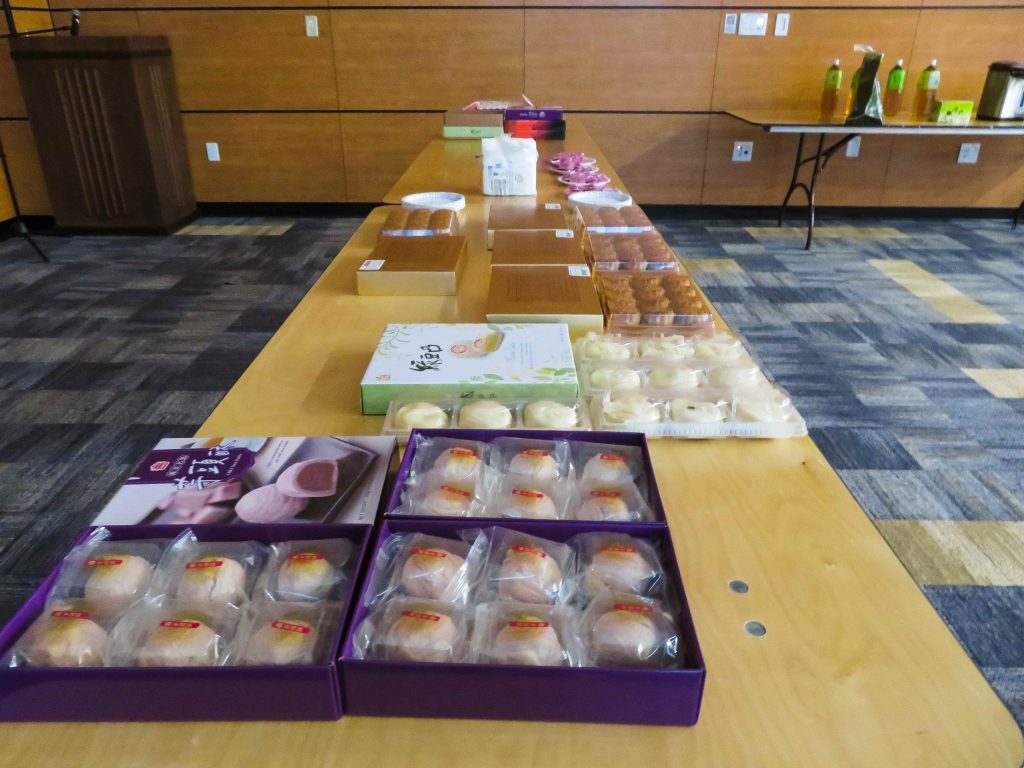Fall is Abound in the McCombs Ballroom: Mid-Autumn Festival Celebration
Share

Every year, on the fifteenth day of the eighth month of the Chinese lunar calendar, is the celebration of the Mid-Autumn Festival. Considered the second most important holiday in China after the Lunar New Year, it is a time for family reunions, gatherings with friends, and admiring the moon at its fullest. This year, it was held on October 6th and to commemorate the occasion, the East Asian Studies Department, co-hosted by Professors Allison Miller and Soojung Han, organized an event on the day to celebrate the occasion and teach students what the holiday is about.
Before diving into Southwestern’s Mid-Autumn Festival celebration of 2025, it is helpful to learn the history of how the Mid-Autumn Festival came to be. Like all myths, there are many variations of the story depending on where you are or who you talk to, but the most popular version goes like this…
The story starts with a man named Hou Yi, a skilled and heroic archer, and his beautiful wife, Chang’e. Long ago when the Earth was circled by ten suns, all ten suns appeared in the sky one day, scorching the lands, drying up the water, killing the people and animals. The emperor sent Hou Yi to shoot down nine of the ten suns. Raising his bow after climbing up the Kunlun Mountains, he released nine arrows, striking nine suns, and all the people and wildlife were saved. As a gesture of gratitude, the Goddess of Heaven gave Hou Yi an Elixir of Immortality so that he could continue to protect the emperor and the Earth.
However, Hou Yi did not wish to gain immortality without his beloved wife, so he kept the elixir for a future time and asked Chang’e to keep it safe for him. After he became famous for his heroic deed, Hou Yi began teaching students how to be a great archer. One student was a man named Pang Meng, but his goal wasn’t to be taught by Hou Yi, instead he wanted to steal the Elixir of Immortality for himself. So one night, when Hou Yi was hunting with his students, Pang Meng stayed back pretending to be unwell, he went into his house and tried to force Chang’e to give him the elixir. Knowing she had no chance of protecting the potion from Pang Meng, Chang’e immediately drank the elixir. The elixir made her fly high until she reached the moon, where she became immortalized as the Moon Goddess.
When he returned home, Hou Yi was heartbroken by his loss. But while wailing in desperation toward the sky, he noticed the moon was extremely bright that evening, and saw a figure that looked exactly like his wife. Hou Yi prepared some fruits and cakes he knew Chang’e loved under the moon in the hope she would see how much he missed her and return back to him. The Mother of the Moon was moved by their love and allowed Chang’e to reunite with Hou Yi every year on the full moon of the eighth lunar month, now known as the Mid-Autumn Festival.
Because of Chang’e’s sacrifice, mooncakes are a must-eat food during the Mid-Autumn Festival; their circular shape symbolizes the moon as well as reunion and happiness. As students filed into the Marsha Shields Ballroom, they had a chance to explore the different mooncakes available, being encouraged to try a variety of different options to explore the myriad flavor profiles. The flavors were lotus, red bean, date, pineapple, taro, and mungbean. The food on offer also included candy, green tea, and matcha genmaicha tea.

When we were seated, the presentation, presented by Dr. Miller, began with an introduction to the East Asian Studies minor, the requirements for the minor, as well as how it connects to our Paideia experience. Then we watched a video on the history of the Mid-Autumn Festival explaining the story of Hou Yi and Chang’e, and why we eat mooncakes and worship the moon. Following the video, we had fun guessing a few lantern riddles, riddles written on lanterns that are displayed during the festival. Next, we read a few poems about the moon by Li Bai, an acclaimed Chinese poet from the Tang dynasty, including one called “Observing the Moon,” which was about him recalling his childhood impressions of the moon and how he didn’t understand it in his youth but now knows more.
Concluding the presentation, we listened to “The Moon Represents My Heart” (月亮代表我的心) by Teresa Teng, a song regularly played during the Mid-Autumn Festival. This love song brings together everyone in the form of friends, families, partners, and loved ones living far away, using the moon as a metaphor for deep feelings of devotion and loyalty. After the presentation, we got to talk with fellow students and connect with them, as well as interact with the professors to get to know them better. The event brought community and connection to all who attended, everyone was laughing and having fun with each other, and that is the true heart of the Mid-Autumn Festival.
This event was a great way to bring students together and celebrate an important cultural holiday with others. Whether they celebrated before or learned about it for the first time, students got the chance to connect and celebrate with each other while eating delicious food. So, the next time when you look at the moon, take a moment to appreciate its beauty with your loved ones.
